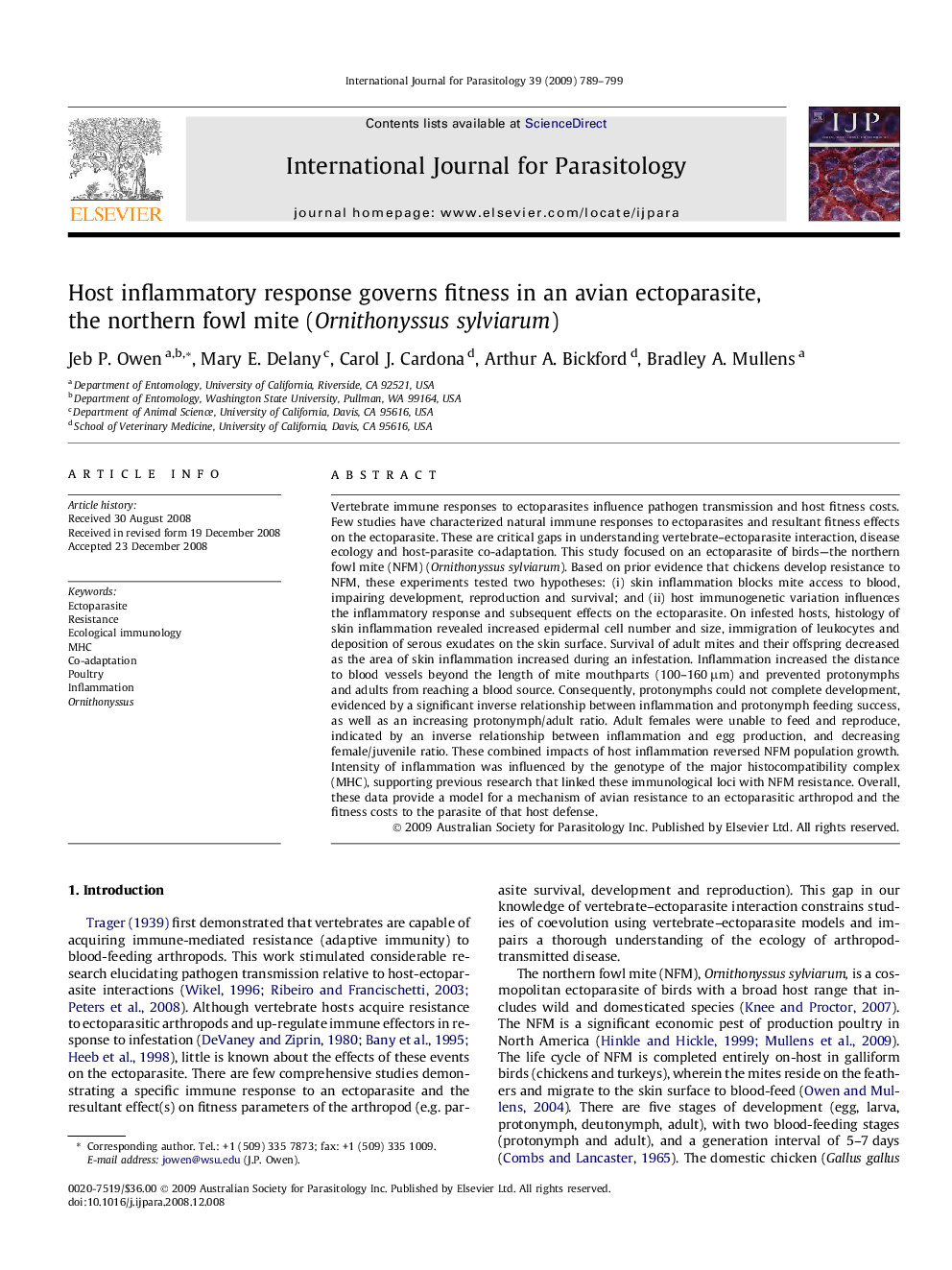| کد مقاله | کد نشریه | سال انتشار | مقاله انگلیسی | نسخه تمام متن |
|---|---|---|---|---|
| 2436813 | 1107358 | 2009 | 11 صفحه PDF | دانلود رایگان |

Vertebrate immune responses to ectoparasites influence pathogen transmission and host fitness costs. Few studies have characterized natural immune responses to ectoparasites and resultant fitness effects on the ectoparasite. These are critical gaps in understanding vertebrate–ectoparasite interaction, disease ecology and host-parasite co-adaptation. This study focused on an ectoparasite of birds—the northern fowl mite (NFM) (Ornithonyssus sylviarum). Based on prior evidence that chickens develop resistance to NFM, these experiments tested two hypotheses: (i) skin inflammation blocks mite access to blood, impairing development, reproduction and survival; and (ii) host immunogenetic variation influences the inflammatory response and subsequent effects on the ectoparasite. On infested hosts, histology of skin inflammation revealed increased epidermal cell number and size, immigration of leukocytes and deposition of serous exudates on the skin surface. Survival of adult mites and their offspring decreased as the area of skin inflammation increased during an infestation. Inflammation increased the distance to blood vessels beyond the length of mite mouthparts (100–160 μm) and prevented protonymphs and adults from reaching a blood source. Consequently, protonymphs could not complete development, evidenced by a significant inverse relationship between inflammation and protonymph feeding success, as well as an increasing protonymph/adult ratio. Adult females were unable to feed and reproduce, indicated by an inverse relationship between inflammation and egg production, and decreasing female/juvenile ratio. These combined impacts of host inflammation reversed NFM population growth. Intensity of inflammation was influenced by the genotype of the major histocompatibility complex (MHC), supporting previous research that linked these immunological loci with NFM resistance. Overall, these data provide a model for a mechanism of avian resistance to an ectoparasitic arthropod and the fitness costs to the parasite of that host defense.
Journal: International Journal for Parasitology - Volume 39, Issue 7, June 2009, Pages 789–799